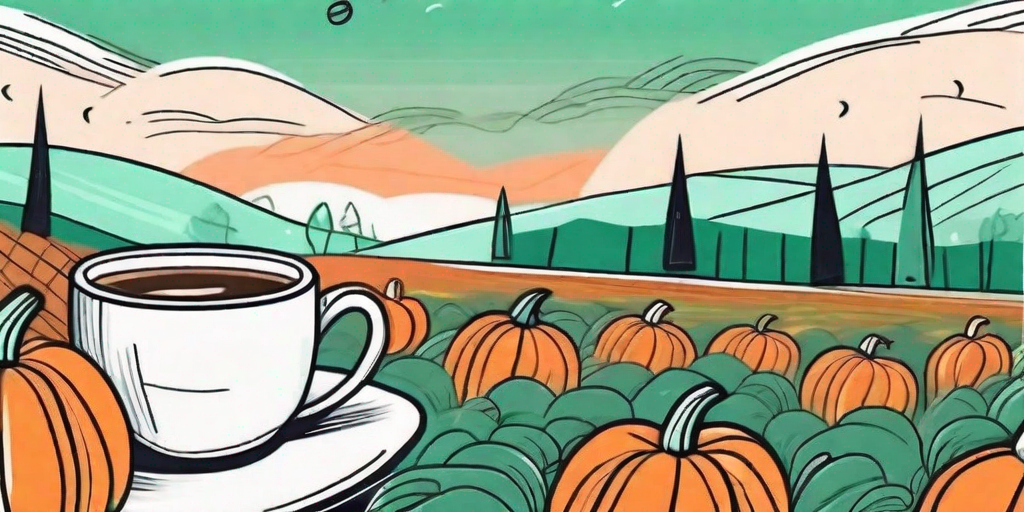
Ah, pumpkin spice - the flavor that has become synonymous with cozy sweaters, falling leaves, and the onset of autumn. But have you ever wondered where this delightful flavor comes from? You guessed it - pumpkins! If you're a true pumpkin spice aficionado, why not take your love to the next level and grow your own pumpkins? In this article, we'll guide you on when and how to plant pumpkin seeds, so you can enjoy your pumpkin spice fix straight from the source.
Understanding the Pumpkin Lifecycle
Before we dive into the nitty-gritty of planting pumpkin seeds, it's important to understand the lifecycle of a pumpkin. This will help you plan your planting and harvesting times, ensuring you have ripe pumpkins just in time for your autumn pumpkin spice cravings.
Pumpkins, like other squash, are annual plants. This means they complete their lifecycle - from seed to fruit to seed again - within one growing season. Depending on the variety, pumpkins typically need between 90 and 120 days to mature. So, if you're planning on carving jack-o'-lanterns or baking pumpkin pies for Halloween, you'll want to count backward from October 31 to determine your planting date.
The Stages of Pumpkin Growth
After planting, pumpkin seeds germinate in about a week, given the right conditions. The first two leaves that emerge are called cotyledons, and they're followed by true leaves that have a more recognizable pumpkin leaf shape. The plant continues to grow and vine out, producing male and female flowers. Bees and other pollinators do the important work of transferring pollen from the male flowers to the female ones, which will then develop into pumpkins.
Once pollinated, the female flowers will start to grow pumpkins at their base. These pumpkins will continue to grow and mature over several weeks. When the pumpkins are fully grown and have developed a hard skin, they are ready to be harvested.
When to Plant Pumpkin Seeds
Now that you understand the lifecycle of a pumpkin, let's talk about the perfect time to plant pumpkin seeds. As mentioned earlier, pumpkins need between 90 and 120 days to mature. But that's not the only factor to consider. Pumpkins are warm-season crops, which means they need both warm soil and warm air to grow well.
Therefore, the best time to plant pumpkin seeds is late spring or early summer, once the danger of frost has passed and the soil has warmed up. If you live in a colder climate, you can start your seeds indoors a few weeks before the last expected frost date, and then transplant them outside when the weather warms up.
Checking the Soil Temperature
How do you know when the soil is warm enough for pumpkin seeds? A soil thermometer is a gardener's best friend in this situation. Pumpkin seeds need a soil temperature of at least 60°F (15°C) to germinate, but they really prefer it to be a bit warmer - around 70°F (21°C) is ideal.
If you don't have a soil thermometer, a general rule of thumb is to wait until 2-3 weeks after the last frost date in your area. By this time, the soil should have warmed up enough for pumpkin seeds.
How to Plant Pumpkin Seeds
Alright, now that you know when to plant pumpkin seeds, let's talk about how to do it. Don't worry, it's not as complicated as you might think!
First, you'll need to choose a sunny spot in your garden. Pumpkins love sun, and they also need a lot of space to grow. If you're short on space, look for bush or semi-bush varieties that don't vine out as much.
Preparing the Soil
Pumpkins aren't too picky about soil, but they do prefer a well-draining soil that's rich in organic matter. You can improve your soil by adding compost or well-rotted manure before planting.
Once your soil is prepared, it's time to plant your seeds. Plant 2-3 seeds about 1 inch deep in each hill. Hills should be spaced about 4-6 feet apart, depending on the variety. After planting, water your seeds well.
Caring for Your Pumpkin Plants
After planting, keep the soil consistently moist but not waterlogged. Once the plants are established, you can water less frequently but more deeply, aiming for at least 1 inch of water per week.
Pumpkins are heavy feeders, so they'll appreciate a side dressing of compost or a balanced organic fertilizer during the growing season. Watch out for common pests like squash bugs and cucumber beetles, and diseases like powdery mildew.
FAQs
Can I plant pumpkin seeds from a store-bought pumpkin?
Yes, you can plant seeds from a store-bought pumpkin. However, keep in mind that many store-bought pumpkins are hybrid varieties, which means the seeds may not produce pumpkins that are exactly like the parent plant.
When should I harvest my pumpkins?
Pumpkins are ready to harvest when they have reached their full color (which depends on the variety) and the rind is hard. A good test is to try to pierce the rind with your fingernail. If it resists puncture, it's ready to harvest.
Conclusion
There you have it - your comprehensive guide to planting pumpkin seeds. With a bit of planning and care, you can enjoy homegrown pumpkins and make your own pumpkin spice treats. So why wait? Get your pumpkin spice fix by planting some pumpkin seeds today!











